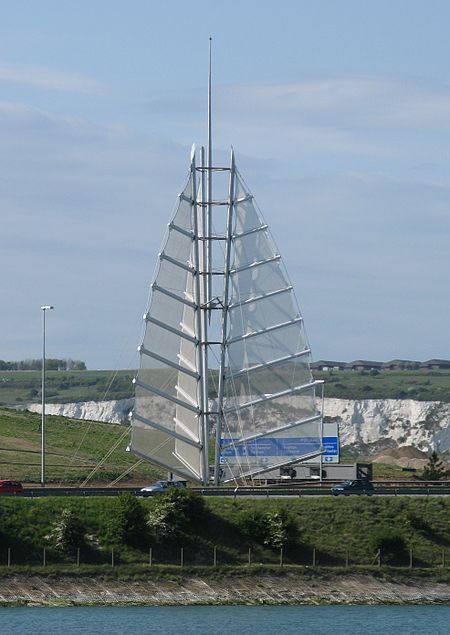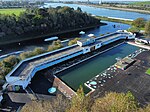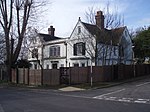Sails of the South

The Tri-Sail, commonly referred to as the Sails of the South, is a 43 m (141 ft)–high structure situated between two carriageways of the M275 motorway just outside Portsmouth, England. It was unveiled in March 2001 in order to enhance the entrance to the city as part of the regeneration scheme The Gateway Project. HGP Architects, whose offices are located in Fareham less than 5 miles (8.0 km) away, realised the scheme and installation. The structure is one of the tallest in Portsmouth. The physical appearance of the Sails are a masted tri-sail, flanked by poles and cables on either side of the carriageway to form Tipner Bridge. The Sails are illuminated in violet at night. In addition, there are bird roosting sites in nearby Tipner Lake.The sails of the south was part of the redundant but later revived gateway project, this and the refurbishment of the nearby bridge was the only parts of the project to be realised. The bridge intended to take the M275 over a roundabout of an unbuilt junction roundabout. In 2006 vandals smashed 21 of the 24 lights that light up the structure. As of 14/07/2015, they are yet to be fixed.
Excerpt from the Wikipedia article Sails of the South (License: CC BY-SA 3.0, Authors, Images).Sails of the South
M275, Portsmouth Cosham
Geographical coordinates (GPS) Address External links Nearby Places Show on map
Geographical coordinates (GPS)
| Latitude | Longitude |
|---|---|
| N 50.833055555556 ° | E -1.0858333333333 ° |
Address
Portsmouth Millenium Tri-Sail
M275
PO6 3FP Portsmouth, Cosham
England, United Kingdom
Open on Google Maps










